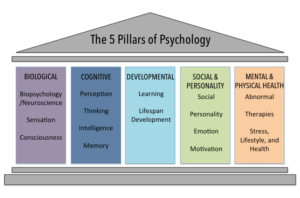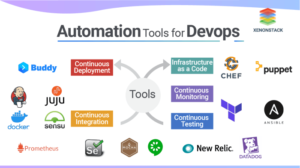
Exploring back-end development frameworks opens up a world of possibilities, enabling developers to create robust applications that serve as the backbone of modern web services. These frameworks provide the necessary tools and structures, allowing for efficient coding and seamless integration, making them essential for any developer’s toolkit.
From popular frameworks like Node.js and Django to the importance of security measures and hosting solutions, understanding these elements is crucial for anyone looking to excel in back-end development. Each framework offers its unique features and advantages, catering to different project requirements while enhancing productivity and performance.
Back-End Development Frameworks
Back-end development frameworks are vital tools that help developers build server-side applications efficiently. These frameworks provide a structured way to manage database interactions, user authentication, and server logic, significantly streamlining the development process. By leveraging these frameworks, developers can focus on application logic rather than the underlying infrastructure.Various back-end development frameworks are popular among developers, each offering unique features that cater to different project needs.
Understanding these frameworks is essential for making informed choices in development projects. Here are some of the most widely used back-end frameworks, along with their features.
Popular Back-End Development Frameworks
There are several back-end frameworks that developers commonly use, each bringing its strengths to the table. Below are a few of the most popular frameworks along with their key features:
- Node.js: An event-driven, non-blocking I/O model that makes it lightweight and efficient. It’s particularly well-suited for building real-time applications like chat applications and online gaming.
- Django: A high-level Python framework that encourages rapid development and clean, pragmatic design. Its features include an ORM for database manipulation and a robust admin panel.
- Ruby on Rails: A web application framework that emphasizes convention over configuration. It provides tools for database migrations and scaffolding, making it easy to create full-featured applications quickly.
- Spring: A powerful Java framework designed for building enterprise-level applications. It offers comprehensive support for dependency injection, aspect-oriented programming, and transaction management.
- Flask: A micro-framework for Python that is simple and lightweight, making it ideal for small applications and prototypes. Its flexibility allows developers to choose the tools and libraries they want to use.
These frameworks not only ease the development process but also enhance application performance and maintainability, making them invaluable in today’s software development landscape.
Advantages of Using Frameworks
Utilizing back-end frameworks brings several advantages to the development process, contributing to both efficiency and quality. Some of the key benefits include:
- Enhanced Productivity: Frameworks provide built-in functions and libraries that streamline common tasks, allowing developers to focus on unique application features rather than repetitive coding.
- Structured Codebase: They enforce a consistent structure, making it easier for teams to collaborate and maintain code, which is crucial in larger projects.
- Security Features: Many frameworks come with built-in security measures to protect against common vulnerabilities like SQL injection, ensuring applications are more secure by default.
- Scalability: Frameworks are designed to handle growth. They provide the tools necessary to scale applications seamlessly as user demand increases.
- Community Support: Popular frameworks often have large communities, which means plenty of resources, tutorials, and plugins are available, facilitating problem-solving and development.
The combination of these advantages can lead to faster delivery times and higher-quality applications.
Examples of Projects Built with Back-End Frameworks
Back-end frameworks have been employed in numerous successful projects across various industries. Here are some notable examples:
- Node.js: Netflix uses Node.js for its user interface, allowing for fast loading times and improved performance during high traffic periods.
- Django: Instagram was built using Django, which provided a robust framework that supports rapid growth and a large number of active users.
- Ruby on Rails: GitHub, a platform for version control and collaboration, is built on Ruby on Rails, benefiting from its rapid development capabilities.
- Spring: LinkedIn utilizes the Spring framework to handle their complex architecture and provide a seamless experience for millions of users.
- Flask: Pinterest started with Flask because of its simplicity and flexibility, allowing the team to iterate quickly during the early development phases.
These examples highlight how different frameworks can be adapted to meet the specific needs of diverse applications, showcasing their versatility and effectiveness in real-world scenarios.
Web Hosting and Domain Names

Web hosting and domain names are fundamental components that enable web applications to function seamlessly. In the context of back-end development frameworks, choosing the right hosting service is crucial as it directly affects performance, security, and scalability. A reliable hosting service provides the necessary environment for back-end frameworks to operate efficiently, ensuring that applications remain responsive and accessible to users.
Importance of Web Hosting for Back-End Development
Web hosting plays a vital role in the deployment and management of applications built with back-end frameworks. It encompasses the storage of application files and databases, as well as the server configuration required for running back-end processes. Selecting a suitable web hosting provider ensures that your application has the resources it needs, including bandwidth, storage, and server-side scripting capabilities. Here are key factors to consider regarding the importance of web hosting:
- Performance: Fast loading times and low latency are essential for user retention. A quality hosting provider offers optimized servers that enhance the performance of back-end frameworks.
- Scalability: As traffic increases, your hosting solution should be able to scale accordingly. Choose a service that allows easy upgrades to accommodate growth.
- Security: The right hosting provider will offer robust security measures, including SSL certificates, firewalls, and regular backups, which are crucial for protecting sensitive user data.
- Technical Support: Reliable customer support is essential for quickly resolving issues that may arise during deployment or runtime.
Relationship Between Domain Names and Server Management
The relationship between domain names and server management is integral for the ease of access and operational efficiency of back-end applications. A domain name serves as the web address that users type into their browsers to access the server where the application is hosted. Proper server management ensures that this connection is reliable and efficient. Here are the critical aspects of this relationship:
- DNS Configuration: Domain Name System (DNS) settings must be correctly configured to point the domain to the appropriate server IP address, ensuring that users can reach the application without delays.
- Server Location: The geographical location of the server can impact loading times. Choose a host with servers located near your target audience for optimal performance.
- Redirects and Subdomains: Effective management of redirects and subdomains can help streamline user experience and can be beneficial for organizing application architecture.
Choosing the Right Hosting Service for Back-End Frameworks
Selecting the correct hosting service tailored to your specific back-end framework is crucial for maximizing application performance and functionality. Consider the following factors when making your choice:
- Framework Compatibility: Ensure that the hosting service supports the specific technologies and programming languages used in your back-end framework (e.g., Node.js, Ruby on Rails, or Django).
- Resource Allocation: Evaluate the available resources such as CPU, RAM, and storage. These should match the demands of your application to ensure smooth operation.
- Deployment Options: Different hosting types (shared, VPS, dedicated, or cloud hosting) offer varied deployment environments. Choose one that aligns with your application needs and budget.
- Reputation and Reviews: Research customer reviews and reputations of hosting providers to gauge their reliability and performance history.
Programming Languages in Back-End Development
In the realm of back-end development, the choice of programming language significantly influences the overall architecture, maintainability, and performance of web applications. Each language brings its own strengths and weaknesses, and understanding these nuances helps developers select the most suitable one for their projects.When comparing programming languages commonly used in back-end frameworks, it’s essential to consider factors such as community support, performance, and ease of integration with various technologies.
Below is a comparison of several popular back-end programming languages:
Comparison of Programming Languages
The following languages are widely recognized in the back-end development landscape, each with distinct features and use cases:
- Node.js (JavaScript): Known for its non-blocking architecture, Node.js excels in handling multiple connections simultaneously, making it ideal for real-time applications. Its extensive npm ecosystem offers a vast selection of libraries and frameworks.
- Python: Renowned for its simplicity and readability, Python is often favored for rapid development. Frameworks like Django and Flask provide robust tools for building scalable applications efficiently.
- Java: A stalwart in enterprise applications, Java is known for its portability and strong performance. The Spring framework supports complex applications with features such as dependency injection and aspect-oriented programming.
- C#: As a language developed by Microsoft, C# is commonly used with the ASP.NET framework. It offers a rich set of features and is well-suited for Windows-based applications.
- Ruby: Ruby, particularly with the Ruby on Rails framework, emphasizes convention over configuration, allowing for rapid application development while maintaining high code quality.
Best Practices for Coding Within Frameworks
Adhering to best practices when coding within back-end frameworks can significantly enhance code quality and maintainability. Some essential practices include:
- Modularization: Break down the code into reusable modules or components. This approach not only makes testing easier but also promotes code reusability.
- Consistent Naming Conventions: Use clear and consistent naming conventions for variables, functions, and classes. This practice improves code readability and helps other developers understand your work more easily.
- Error Handling: Implement robust error handling to manage unexpected situations gracefully. This ensures that the application remains stable and user-friendly.
- Documentation: Maintain comprehensive documentation for your code and APIs. This resource proves invaluable for future maintenance and onboarding new developers.
- Version Control: Utilize version control systems like Git to manage changes in your codebase. This practice allows for collaboration and tracking of modifications over time.
Performance Implications of Different Programming Languages
The performance of back-end applications is significantly affected by the choice of programming language. Here are some implications to consider:
- Execution Speed: Languages like C++ and Java generally offer better execution speeds due to their compiled nature compared to interpreted languages like Python.
- Concurrency Handling: Node.js is designed to handle a high volume of simultaneous connections efficiently, which is crucial for real-time applications like chat services.
- Memory Management: Languages such as Java and C# provide automatic garbage collection, which can reduce memory leaks but may introduce overhead. In contrast, languages like C require manual memory management, offering more control at the cost of increased complexity.
- Framework Overhead: Some frameworks may add additional overhead that can affect performance. Understanding the trade-offs between convenience and speed is essential when selecting a framework.
“Performance considerations are crucial in back-end development, as they directly impact user experience and system scalability.”
Security Measures in Back-End Development
In the realm of back-end development, security should be a paramount concern for developers. As applications handle sensitive data and user interactions, implementing robust security measures is essential to protect against potential threats. This section highlights critical security practices that developers must adopt to safeguard their applications and user information effectively.
Essential Security Measures in Back-End Frameworks
Developers must be aware of several key security practices that can significantly enhance the security posture of back-end frameworks. These measures include:
Input Validation
Validating all inputs from users helps in mitigating risks associated with injection attacks, such as SQL injection and cross-site scripting (XSS). Ensuring that data conforms to expected formats is crucial.
Authentication and Authorization
Implementing strong authentication mechanisms, including multi-factor authentication (MFA), ensures that only authorized users can access the application. Role-based access control (RBAC) further restricts user permissions based on their role.
Data Encryption
Encrypting sensitive data both at rest and in transit protects it from unauthorized access. Utilizing protocols such as HTTPS for data transmission and AES for data storage enhances data security.
Regular Security Audits
Conducting regular security audits and vulnerability assessments helps identify potential security weaknesses and areas for improvement in the system.
Methods for Securing APIs and User Data
APIs often serve as the gateway to back-end services, making their security critical. To ensure the security of APIs and the data they handle, developers should consider the following methods:
API Rate Limiting
Implementing rate limiting can prevent abuse of API endpoints by restricting the number of requests a client can make within a specified timeframe. This helps defend against denial-of-service attacks.
Token-Based Authentication
Using token-based authentication mechanisms such as JSON Web Tokens (JWT) ensures that secure sessions can be maintained without requiring users to repeatedly enter credentials.
CORS Policies
Configuring Cross-Origin Resource Sharing (CORS) policies correctly is vital to control which front-end applications can access back-end services, reducing exposure to cross-origin attacks.
Logging and Monitoring
Keeping detailed logs of API access and monitoring for unusual patterns can help identify potential security breaches and allow for a quick response.
Security Checklist for Developers
A comprehensive security checklist can help developers systematically implement and verify security measures in their back-end applications. The following checklist Artikels critical areas to focus on:
Input Handling
Validate and sanitize all user inputs.
- Use prepared statements for database queries.
- Authentication
Implement strong password policies.
- Use MFA for sensitive operations.
- Data Protection
Ensure data is encrypted in transit and at rest.
- Regularly update encryption protocols.
- API Security
Implement rate limiting on API endpoints.
- Use secure tokens for API authentication.
- Monitoring and Response
Maintain access logs and monitor for unusual activity.
Establish an incident response plan.
By adhering to these security measures and following the checklist, developers can significantly bolster the security of their back-end applications and protect user data against an evolving landscape of cyber threats.
Making Money Online through Back-End Development

In the digital age, back-end developers have a unique opportunity to monetize their skills and knowledge. With growing demand for robust web applications and services, back-end development can be a lucrative venture. This guide will explore various ways to turn your back-end development expertise into a source of income, whether through freelancing, building applications, or creating passive income streams.
Monetizing Back-End Development Skills through Freelancing
Freelancing offers back-end developers the flexibility to choose projects that align with their interests while earning a competitive income. Platforms like Upwork, Freelancer, and Fiverr are excellent starting points for landing freelance gigs. To succeed in freelancing, consider the following strategies:
- Create a Strong Portfolio: Showcase your best projects, emphasizing your back-end skills and experience. Include descriptions of the technologies used and the impact of your work.
- Network Actively: Join online communities and forums related to programming and development. Engage with potential clients and other freelancers to create valuable connections.
- Offer Diverse Services: Cater to various client needs, from API development to database management. This versatility can help you attract a wider range of clients.
- Set Competitive Rates: Research the prevailing rates in your niche and region, ensuring your pricing reflects your expertise while staying appealing to potential clients.
Building and Selling Web Applications Leveraging Back-End Frameworks
Creating and selling web applications is a lucrative method to capitalize on your back-end development skills. By leveraging frameworks like Django, Ruby on Rails, or Node.js, developers can create robust, scalable applications. Consider these steps when building applications for sale:
- Identify a Market Need: Research to find gaps in the market or inefficiencies that your application can solve. This will help ensure that your product has real demand.
- Develop a Minimum Viable Product (MVP): Focus on building a basic version of your application that includes essential features. This allows you to test your idea with minimal investment.
- Utilize Effective Marketing Strategies: Promote your application through social media, content marketing, and targeted ads. Highlight the unique features that set your application apart from competitors.
- Consider Subscription Models: Offering your application as a subscription service can create a steady income stream, as users pay regularly for access to premium features and updates.
Creating Passive Income Streams through Back-End Development Services
Passive income can significantly enhance your financial stability as a back-end developer. By implementing certain strategies, you can create income streams that require minimal ongoing effort. Key strategies include:
- Developing SaaS Products: Software as a Service (SaaS) platforms can generate recurring revenue. Focus on creating tools that provide continual value to users, such as project management software or customer relationship management (CRM) tools.
- Creating Online Courses: Share your back-end development knowledge by creating and selling online courses on platforms like Udemy or Teachable. This can yield continuous income as new students enroll.
- Building and Licensing APIs: If you have expertise in building APIs, consider creating and licensing them to other developers. This can provide a steady stream of licensing fees.
- Writing eBooks or Guides: Author detailed guides or eBooks on back-end development topics and sell them on platforms like Amazon or your personal website. This can generate passive income as your content continues to sell over time.
Mobile Computing in Back-End Development
In the rapidly evolving landscape of mobile technology, back-end development plays a crucial role in supporting mobile applications. Mobile computing relies heavily on robust back-end frameworks to deliver seamless user experiences, manage data effectively, and ensure security. Understanding how these frameworks integrate with mobile front-ends is essential for developers looking to create effective mobile solutions.Back-end frameworks support mobile applications by providing essential services such as data storage, authentication, and communication between the client and server.
They handle requests from mobile devices, process them, and return the appropriate responses in real time. Popular back-end frameworks like Node.js, Django, and Ruby on Rails are designed to manage high loads and concurrent requests, which are common in mobile environments. These frameworks also offer APIs (Application Programming Interfaces) that allow mobile apps to interact with the server efficiently.
Integration of Back-End Systems with Mobile Front-Ends
The integration process between back-end systems and mobile front-ends is vital for ensuring that data flows seamlessly. This process involves several steps:
1. API Development
The back-end must expose its functionalities through APIs, allowing mobile apps to retrieve and manipulate data. RESTful APIs and GraphQL are commonly used to facilitate this interaction.
2. Data Serialization
Data transmitted between the back-end and mobile front-end needs to be serialized into formats like JSON or XML, making it easier for mobile applications to parse and utilize the information.
3. Authentication and Authorization
Implementing secure authentication mechanisms, such as OAuth or JWT (JSON Web Tokens), is crucial for ensuring that only authorized users can access specific services.
4. Data Caching
To enhance performance, caching strategies can be employed to store frequently accessed data locally on mobile devices or at the server-side, reducing load times and server requests.These steps are essential to creating a responsive and secure mobile application. Each integration requires careful planning and execution to address the unique constraints of mobile devices, such as limited bandwidth and varying network conditions.
Challenges in Back-End Development for Mobile Computing Environments
Developing back-end solutions for mobile environments presents several challenges that developers must navigate. These include:
Network Latency
Mobile devices often experience fluctuating network conditions, which can lead to delays in data retrieval. Developers must implement strategies to optimize data transmission and ensure a smooth user experience despite these fluctuations.
Device Fragmentation
With a variety of devices and operating systems available, ensuring compatibility across platforms can be challenging. Developers must test applications on multiple devices to deliver consistent performance.
Security Concerns
As mobile applications frequently handle sensitive data, ensuring robust security measures is critical. Implementing encryption for data in transit and at rest, along with secure access protocols, is necessary to protect user information.
Scalability
A successful mobile application may need to accommodate a growing number of users. Back-end systems must be designed for scalability, allowing them to handle increased loads without compromising performance.Developers are constantly innovating to overcome these challenges, utilizing techniques like adaptive data synchronization and performance monitoring to ensure that mobile applications remain responsive and secure in various environments.
Last Word
In summary, back-end development frameworks are invaluable assets that streamline the development process, ensuring that applications are not only functional but also secure and scalable. As technology continues to evolve, staying updated with these frameworks and best practices will empower developers to create efficient solutions that meet the demands of a dynamic digital landscape.
Key Questions Answered
What is a back-end development framework?
A back-end development framework is a software framework that provides a foundation for building server-side applications, including libraries, tools, and best practices to streamline development.
Why should I use a framework for back-end development?
Using a framework can significantly speed up the development process, enforce best practices, and enhance security, making your application more reliable and maintainable.
Can I use multiple frameworks in one project?
Yes, it’s possible to integrate multiple frameworks in a single project, although it may require careful planning to ensure compatibility and maintain performance.
How do I choose the right back-end framework?
Consider factors like the project requirements, the technology stack, the community support, and your own familiarity with the framework before making a choice.
Are back-end frameworks only for large applications?
No, back-end frameworks can be beneficial for both small and large applications, as they provide structure and efficiency regardless of the project’s scale.





